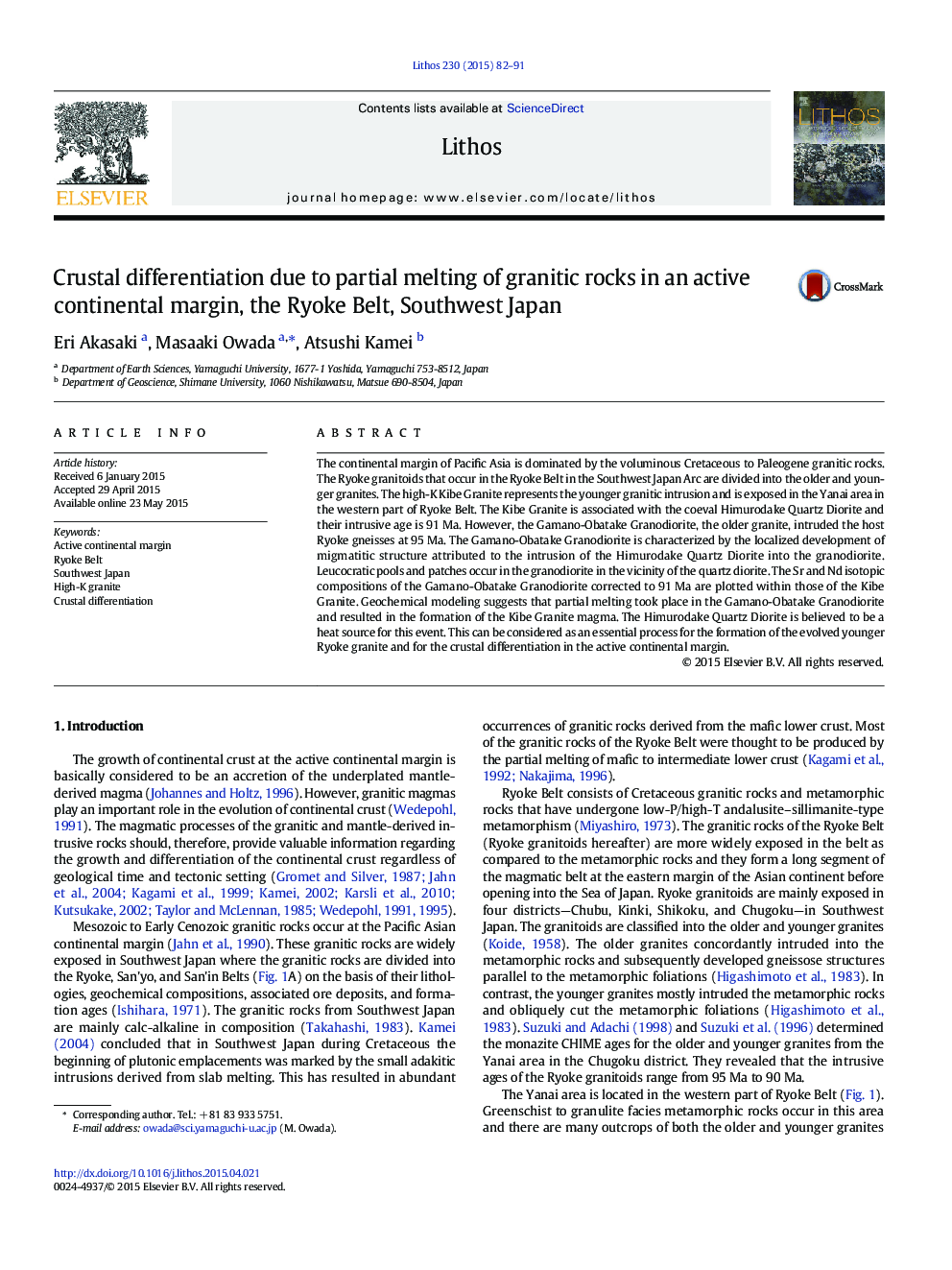| Article ID | Journal | Published Year | Pages | File Type |
|---|---|---|---|---|
| 4715672 | Lithos | 2015 | 10 Pages |
•We modeled a process of crustal differentiation in an active continental margin.•Partial melting of granodioritic crusts forms high-silica granite magma.•Dehydration melting of granitic crusts can make high K/Na granite magma.•Crustal re-melting essentially occurs in magmatic arcs.
The continental margin of Pacific Asia is dominated by the voluminous Cretaceous to Paleogene granitic rocks. The Ryoke granitoids that occur in the Ryoke Belt in the Southwest Japan Arc are divided into the older and younger granites. The high-K Kibe Granite represents the younger granitic intrusion and is exposed in the Yanai area in the western part of Ryoke Belt. The Kibe Granite is associated with the coeval Himurodake Quartz Diorite and their intrusive age is 91 Ma. However, the Gamano-Obatake Granodiorite, the older granite, intruded the host Ryoke gneisses at 95 Ma. The Gamano-Obatake Granodiorite is characterized by the localized development of migmatitic structure attributed to the intrusion of the Himurodake Quartz Diorite into the granodiorite. Leucocratic pools and patches occur in the granodiorite in the vicinity of the quartz diorite. The Sr and Nd isotopic compositions of the Gamano-Obatake Granodiorite corrected to 91 Ma are plotted within those of the Kibe Granite. Geochemical modeling suggests that partial melting took place in the Gamano-Obatake Granodiorite and resulted in the formation of the Kibe Granite magma. The Himurodake Quartz Diorite is believed to be a heat source for this event. This can be considered as an essential process for the formation of the evolved younger Ryoke granite and for the crustal differentiation in the active continental margin.
Graphical abstractFigure optionsDownload full-size imageDownload as PowerPoint slide
